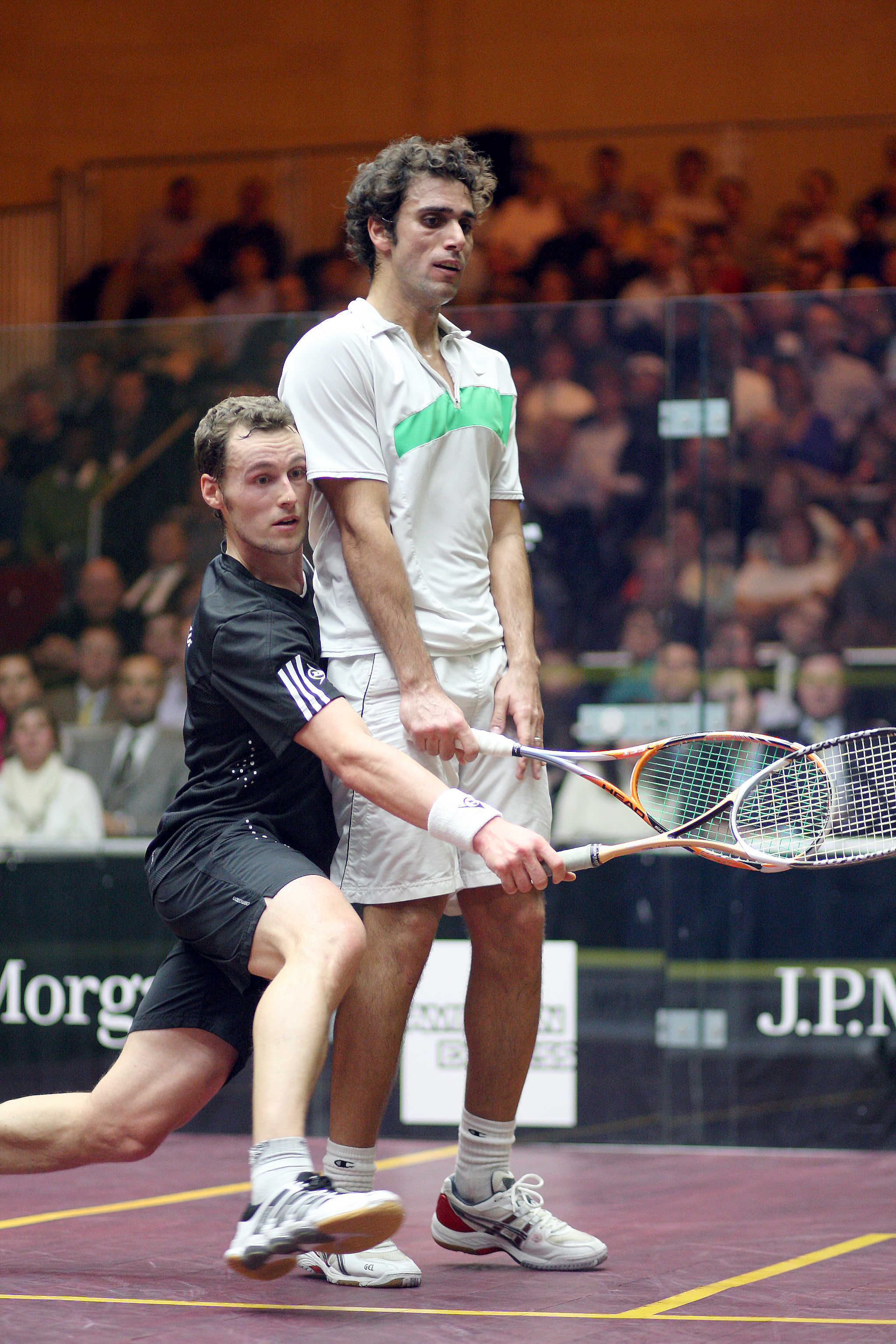By Barry Faguy, WSF Referees and Rules Committee
The term ‘blocking’, as commonly used by Referees and players, is actually not specifically found in the rules. In the pejorative sense in which we usually use it, we are referring to an unfair (and punishable) action by the outgoing player (the blocker) whose clearing action is purposefully wrong.
It has been said that blocking is the art of creating an obstruction without appearing to do so. It can take the form of a slow movement to clear, a deliberate sway in body movement, a carelessly extended arm, a wrong direction to clear, a dragging foot, a follow-through held too long, and so on. The intention of these actions is to stop the incoming striker from getting rapid access to the ball, hoping that the blocker’s shot turns out to be a winner, or that, as a worst case scenario for the blocker, you the Referee, award a let to the incoming striker. In essence, the ‘blocker’ is attempting to have the best of both worlds. We should note of course, that not all similar stoppages of play are due to deliberate blocking—since many occur by simple incompetence.
Nonetheless, if upon appeal, you as a Referee had detected deliberate blocking, you would need to consider that the blocker has not made every (read, ‘correct’) effort to clear. So, before we now proceed to the main area of concern under our heading, we just needed to make it clear that the preceding speaks of unfair play by the blocker.

The flip side
The other use of the term ‘blocking’ is the flip side of the above, where it is indeed referred to specifically in the rules—this time in reference to the incoming striker’s action. The rules refer to it as “block(ing) the opponent’s exit.” It’s an unfortunate choice of a word because, as mentioned previously, the colloquial use is now understood to be an unfair action by the outgoing player.
To facilitate your decision making, I will use the word ‘trapped’ to differentiate it from ‘blocking’—hoping to create a better mental image of these trapping scenarios as basically a neutral action (not unfair play)—having an initial assumption that it isn’t purposefully wrong. In these cases, the ‘blocker’ (or trapper) is the incoming striker who is making a legitimate attempt to get in and play the ball, but blocks or traps the outgoing player’s good effort to clear. I’ve used the word ‘neutral’ to set the tone that this is not a form of cheating—but that’s not to say that there’s never any punishment associated with it.
It happens all the time
Typically, after hitting a shot, the outgoing player starts to clear legitimately—but then that escape is trapped. The trapping can take the form of anything from an outright ‘brick wall/bear hug’ kind of barrier, to shoulder contact, to a simple ‘hand on the back’ touch—all by the incoming striker who is typically trying to avoid serious contact. (Note: We are assuming here that this is legitimate trapping, not the creation of artificial interference to fish for a stroke—the subject of a later article). The contact is enough to stop play and have the referee understand that a let is being called—with things looking bad for the trapped player as the ball continues back towards both of them.
What to do?
Here’s what a key guideline of the rules suggests to help decide the fair outcome:
- The route (right or wrong) taken by the outgoing player to clear; If before being trapped, the outgoing player had the opportunity to establish such an exit route, and you as the Referee clearly see that this route was the wrong one (essentially towards the incoming striker), then your decision to penalize the outgoing player is a lot easier. Unfortunately, as things usually go, the trapping is often so quick that the outgoing player barely has time to straighten up—and play stops. We often have no idea what the intended exit route was.
- The speed (fast or slow) of the ball and the players;
- The distance (close or far) of the incoming striker from the ball;
These two bullets suggest that this trapping can occur both when the striker is close to or far from the ball, and with varying speeds of players and ball. Fundamentally, what the guideline is saying to us is that we should consider whether the opponent would have been clear had it not been for the blocking.
Bottom Line suggestions
NO LET: if the striker would not have been able to make a good return (pretty obvious!).
STROKE: if the outgoing player had time to establish an exit path and took the wrong one.
STROKE: if the outgoing player took too long to clear or otherwise introduced an impediment.
STROKE: if the striker was right at the ball.
YES LET: if the striker still needed a step or more before being able to hit the ball.
YES LET: if you’re uncertain about any of these elements (a fallback to be used sparingly!)
One last thing
Finally, in answer to an often-asked question, there is no allowance in the rules for when such a situation occurs repeatedly. Just because a player’s choice of shot leads to the same scenarios over & over, each situation must be judged on its own merits. A player cannot be punished solely on the basis of shot selection. It’s the subsequent actions of the players that are the determinants.
Looking for information on just about any officiating topic? Visit The Squash Official online: www.squash.ca/e/officiating/tso/), and click on the ‘Library’ link to the left to find your subject


